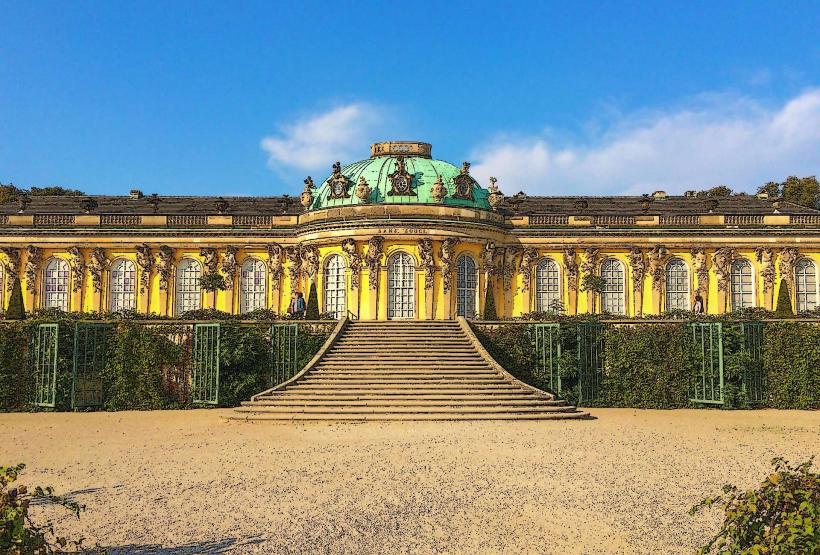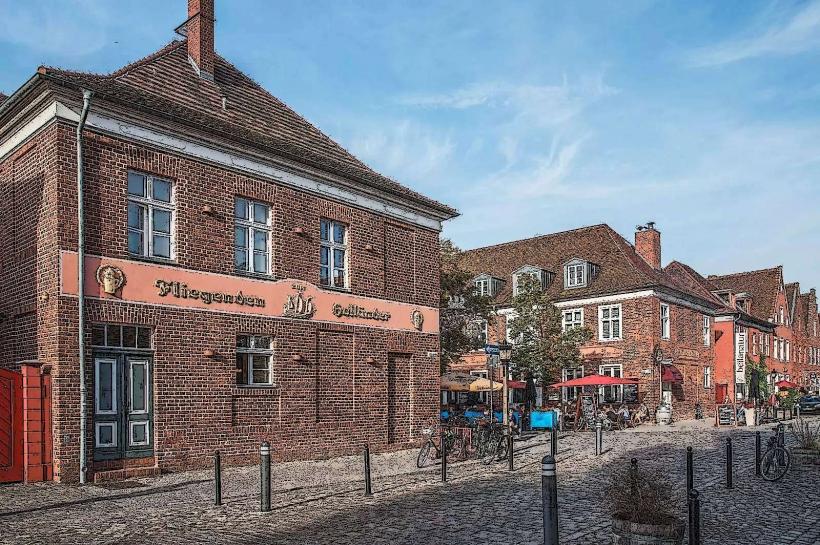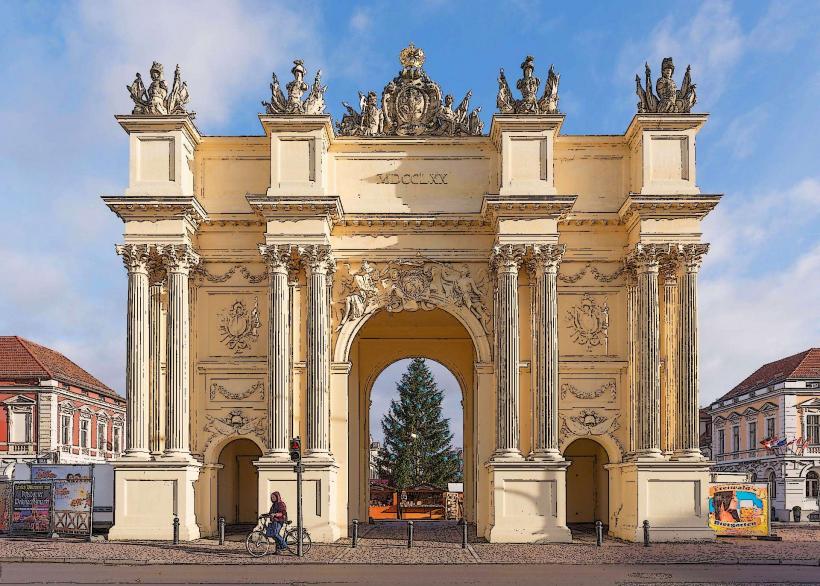Information
Landmark: Cecilienhof PalaceCity: Potsdam
Country: Germany
Continent: Europe
Cecilienhof Palace (Schloss Cecilienhof) is a historic palace located in Potsdam, Germany, and is renowned not only for its architectural beauty but also for its significant role in modern history. It was the site of the Potsdam Conference in 1945, where the leaders of the Allied powers—Harry S. Truman (USA), Winston Churchill (UK), and Joseph Stalin (Soviet Union)—met to discuss the post-World War II reorganization of Europe and the world.
History and Construction
Construction: Cecilienhof Palace was built between 1913 and 1917 as a summer residence for the German Imperial family, particularly for Crown Prince Wilhelm and his wife Cecilie of Mecklenburg-Schwerin, after whom the palace is named. The design was commissioned by the royal couple, and the palace was constructed in the English country house style. This style was a departure from the more traditional German palatial architecture, reflecting the personal tastes of the Crown Prince and his wife, who had spent time in Britain and admired the English manor house aesthetic.
Architectural Design: The palace was designed by the architect Franz Skarbina, who incorporated elements of Tudor Revival and Arts and Crafts styles into the design. The building features steep roofs, half-timbered walls, and a combination of brick and stone, giving it the appearance of a traditional British country house.
The palace is composed of a central building with wings and a large garden area. Its design stands in contrast to the grandeur of other palaces in Potsdam, such as Sanssouci and the New Palace, reflecting the more modest, personal tastes of the royal family.
The Potsdam Conference (1945)
Historical Significance: Cecilienhof Palace is perhaps most famous for being the venue of the Potsdam Conference in July-August 1945, a crucial meeting between the leaders of the United States, the United Kingdom, and the Soviet Union after the end of World War II. The conference was held to decide how to administer the defeated Nazi Germany and to set the terms for the post-war order.
- Key Leaders: The leaders in attendance were U.S. President Harry S. Truman, British Prime Minister Winston Churchill (who was later replaced by Clement Attlee after the British general elections), and Soviet Premier Joseph Stalin.
- Key Decisions: The conference addressed the future of Europe, including the division of Germany into zones of occupation, the demilitarization of Germany, the prosecution of war criminals, and the setting of post-war borders in Europe. The Potsdam Agreement, signed at the conference, also laid the groundwork for the Cold War by establishing the spheres of influence of the United States and the Soviet Union in Europe.
Architecture and Interior Design
English Country House Style: Cecilienhof is distinct from other royal palaces in Potsdam due to its English country house style, which was designed to reflect a more personal, family-oriented living space, rather than the grandeur associated with traditional royal palaces. The interior features a mix of English Tudor-style elements such as oak paneling, stained-glass windows, and brick fireplaces.
Rooms of Interest: Some of the most notable rooms in the palace are:
- The Marble Hall: This spacious room with its high ceiling and large windows was used for important gatherings and events.
- The Conference Rooms: The rooms where the Potsdam Conference was held are still preserved today. The Truman Room, where key discussions took place, has been preserved in its original state.
- Private Rooms of the Royal Family: Some areas of the palace still feature the original furnishings and decor from the time it was a royal residence, offering visitors a glimpse into the life of the German Imperial family.
Gardens: Cecilienhof Palace is set within a large park, Neuer Garten, which features a beautifully landscaped area with ponds, flower beds, and walking paths. The gardens add to the serene atmosphere of the palace, with views over the surrounding nature.
Museum and Visitor Experience
Cecilienhof Palace Museum: Today, Cecilienhof Palace functions as a museum, where visitors can learn about both the royal history of the palace and its later significance in the context of post-war diplomacy. The museum provides detailed exhibitions on the Potsdam Conference, as well as the history of the royal family that lived there.
Exhibitions: The palace houses exhibitions related to the Potsdam Conference, featuring photographs, documents, and artifacts from the event, including the original documents of the Potsdam Agreement. The museum also provides context on the lives of the German Imperial family and the personal history of Crown Prince Wilhelm and Princess Cecilie.
Guided Tours: Visitors can take guided tours to learn more about the palace's history, the Potsdam Conference, and the lives of the people who lived there. The tours often include visits to the rooms where the conference took place, with explanations of the historical significance of each area.
Cultural Events and Conferences: Cecilienhof Palace also hosts various cultural events, including classical concerts, lectures, and temporary exhibitions. These events bring the history of the palace to life and attract visitors from all over the world.
Legacy and Symbolism
Symbol of the End of World War II: Cecilienhof’s role as the location of the Potsdam Conference makes it a symbol of the end of World War II and the beginning of the post-war era. The decisions made here would shape the future of Europe, particularly the division of Germany and the emergence of the Cold War between the Eastern Bloc (led by the Soviet Union) and the Western Bloc (led by the United States and its European allies).
Cultural Significance: While Cecilienhof was initially a royal residence, its historical importance is primarily tied to its role in international diplomacy and the decisions made during the Potsdam Conference. The palace serves as a reminder of the complex political and historical events of the 20th century.
Conclusion
Cecilienhof Palace is a historically rich and architecturally unique site that offers visitors a chance to explore both royal history and significant moments from the Cold War era. Its peaceful setting, beautiful gardens, and impressive architecture make it an interesting destination, while its connection to the Potsdam Conference and the shaping of post-war Europe adds layers of historical depth to the experience. Whether you're interested in the legacy of the German Imperial family or the diplomatic history of the 20th century, Cecilienhof provides an insightful glimpse into the past.




